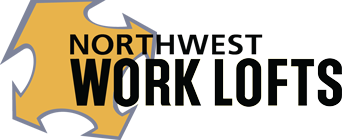Washington State Department of Labor & Industries (L&I): Office Space Safety and Compliance Regulations
Navigating the regulations set by Washington State’s Department of Labor & Industries (L&I) can be crucial for maintaining a safe and compliant office environment. Understanding these safety and compliance regulations helps businesses avoid penalties and create a workspace that prioritizes employee well-being. This knowledge not only supports a safer workplace but also enhances overall productivity and morale.
Washington State’s L&I places significant emphasis on ensuring that workspaces meet specific safety standards. The guidelines cover various aspects, including ergonomic assessments, proper lighting, and emergency preparedness. By adhering to these regulations, companies can significantly reduce the risk of workplace injuries and foster a culture of safety.
An important part of compliance involves regular inspections and training. These measures ensure that all employees are aware of potential hazards and know how to respond appropriately. By committing to these practices, businesses demonstrate their dedication to creating a secure and compliant office space.
Office Space Safety Regulations
Washington State’s L&I outlines precise regulations for maintaining safety in office environments. These guidelines emphasize preparing for emergencies, ensuring ergonomic workspace configurations, and managing hazardous materials.
Emergency Preparedness and Response
Preparedness begins with a clear emergency action plan. Offices must have well-marked exits and escape routes, emergency lighting, and accessible alarms. Drills should be conducted regularly to ensure all employees know what to do in the event of a fire, earthquake, or other emergencies.
First aid kits and automated external defibrillators (AEDs) must be readily available and maintained. Staff should be trained in basic first aid and CPR. Emergency contact numbers should be posted prominently, and a designated safety coordinator should oversee all emergency response protocols.
Ergonomics and Workspace Design
An ergonomic office minimizes the risk of musculoskeletal disorders. Workstations should be adjustable to fit individual needs, including desks, chairs, and computer monitors. Keyboard and mouse placement should allow for natural hand positioning to prevent strain.
Workplace design must focus on comfortable seating, adequate lighting, and reducing noise pollution. Encouraging employees to take regular breaks and stretch can also prevent ergonomic-related issues. Monitoring and modifying workstations based on ergonomic assessments is crucial for maintaining a safe workspace.
Hazard Communication and Material Safety
Proper communication of hazards is critical. Offices must maintain a Hazard Communication Program, including Safety Data Sheets (SDS) for any chemicals used or stored. Labels and warnings must be clear and visible on all containers.
Training employees on the proper handling, storage, and disposal of hazardous materials is essential. Personal protective equipment (PPE) should be available and used as needed. Regular inspections ensure compliance with safety standards and identify potential risks before they become serious issues.
Compliance and Enforcement
Compliance with Washington State Department of Labor & Industries regulations ensures the safety and health of office environments. Enforcement of these regulations involves inspections, thorough documentation, and clear consequences for violations.
Inspections and Assessments
L&I conducts regular inspections to ensure office spaces comply with established safety standards. Inspectors focus on several areas, such as workstation ergonomics, fire safety protocols, and electrical hazards. Employers are required to facilitate these inspections and address any identified issues promptly.
Inspections may be scheduled or unannounced, emphasizing the importance of maintaining continuous compliance. Any identified violations must be corrected within specified timeframes to avoid penalties. Compliance checklists and guides are available to help employers prepare for these assessments.
Reporting and Documentation
Employers must maintain detailed records of safety protocols, training sessions, and incident reports. Accurate documentation is vital for demonstrating compliance during L&I inspections. Required records include employee training logs, ergonomic assessments, and safety meeting minutes.
Incident reporting procedures must be clear and accessible to all employees. Employers are obligated to report serious incidents to L&I promptly. Comprehensive documentation supports continuous improvement in workplace safety and helps mitigate potential risks.
Penalties and Violations
Violations of L&I safety regulations can result in fines and other penalties. The severity of penalties depends on the nature and extent of the violation. Minor infractions may incur warnings or small fines, while serious violations can lead to substantial financial penalties or legal action.
Employers have the right to appeal fines or penalties if they believe they are unjustified. Understanding the appeals process and knowing how to contest a citation effectively are crucial for navigating compliance enforcement. Regular training and adherence to regulations mitigate the risk of violations.
